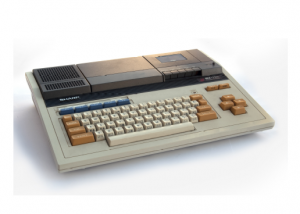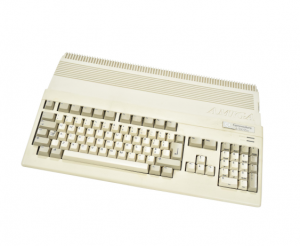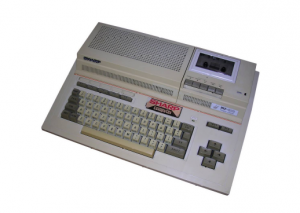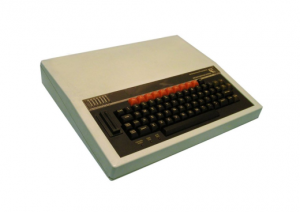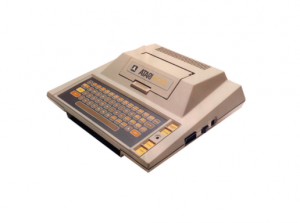The home computer legend of the 1980’s
Released in 1982, the Commodore 64 quickly became one of the most iconic home computers of the 1980s, a machine that combined affordability, technical innovation, and a rich software ecosystem to dominate the personal computing market. Developed by Commodore International, the C64 was designed to outcompete rivals like the Sinclair ZX Spectrum, Atari 8-bit series, and Texas Instruments machines by offering a perfect blend of power, flexibility, and cost-effectiveness. Its technical specifications were impressive for the time: a MOS Technology 6510 CPU running at 1 MHz, 64 KB of RAM—hence the name “C64”—and advanced graphics and sound capabilities unmatched by most competitors. These features made it not only a tool for productivity and education but also a revolutionary platform for gaming, multimedia, and digital creativity.
One of the key innovations of the Commodore 64 was its graphic and sound hardware. The VIC-II graphics chip allowed a resolution of 320×200 pixels with 16 colors, hardware sprites, smooth scrolling, and support for multiple display modes. Its SID sound chip offered three-channel synthesizer audio with filters and waveforms, enabling music and sound effects that rivaled professional synthesizers of the era. These capabilities made the C64 the preferred platform for game developers, and titles like The Last Ninja, Impossible Mission, and Elite demonstrated the machine’s technical prowess. In fact, many developers regarded the C64 as a system that enabled creativity within the constraints of 8-bit computing, encouraging innovative programming techniques and complex gameplay designs. The Commodore 64 was also revolutionary for its software ecosystem. Unlike many contemporary machines that relied on proprietary or limited software, the C64 quickly amassed a vast library of games, productivity applications, and educational titles. Cartridge, cassette, and later disk-based media allowed users to access a diverse range of software, while the built-in BASIC interpreter enabled custom programming. This made the C64 appealing not only to gamers but also to hobbyists and students eager to learn programming, experiment with digital art, or manage personal data. Its affordability—often priced below $600 at launch—made it accessible to households and schools, which further cemented its role as a cornerstone of 1980s home computing.
The impact of the Commodore 64 on gaming culture cannot be overstated. Its superior graphics and audio capabilities, combined with an extensive developer community, led to the creation of many genres and franchises that remain influential today. It became a training ground for early video game developers and composers, fostering a generation of talent that would later shape the international gaming industry. The C64 also popularized home gaming in Europe and North America, demonstrating that personal computers could rival dedicated gaming consoles in entertainment value, while offering the added benefit of programming and customization. Beyond gaming, the C64 influenced educational and professional computing. Schools adopted the machine for teaching programming and computer literacy, while home users employed it for word processing, spreadsheets, and even amateur music production. Peripherals such as disk drives, printers, modems, and networking devices expanded its capabilities, bridging the gap between hobbyist experimentation and practical computing. The machine’s compatibility with a wide range of software and hardware ensured longevity, allowing users to continue developing skills and enjoying content years after its release.
Despite its many strengths, the Commodore 64 was not without limitations. Its single-channel CPU, while adequate for most tasks, constrained multitasking and processing speed compared to later systems. Its BASIC environment, while flexible, was slower and less sophisticated than the environments offered by some competitors. Additionally, the machine relied heavily on tape and disk-based media, which could be slow and prone to errors, and its 8-bit architecture ultimately limited the graphical and computational ceiling. Yet these limitations did little to diminish its popularity; on the contrary, they often inspired creative programming solutions and innovative software design. The market success of the C64 was extraordinary. Over its lifetime, Commodore sold an estimated 17 million units worldwide, making it one of the best-selling single personal computer models in history. Its dominance shaped the competitive landscape, forcing companies like Atari, Sinclair, and Texas Instruments to reconsider pricing, features, and marketing strategies. The machine’s combination of affordability, power, and software diversity created a virtuous cycle: more users attracted more developers, which in turn attracted more users, solidifying the C64 as a cultural and technological icon.
Culturally, the Commodore 64 left an indelible mark. It influenced not only computing literacy but also music, design, and digital creativity. Iconic chiptunes created on the SID chip inspired future generations of electronic musicians, while early demos and graphics pushed the boundaries of what 8-bit computers could achieve. Communities of enthusiasts, hobbyists, and coders formed around the C64, fostering collaboration, knowledge sharing, and innovation. Its legacy is evident in modern retro computing, emulation projects, and the nostalgia-driven revival of 1980s computing culture. In conclusion, the Commodore 64 was a transformative machine that redefined home computing. Its technical innovations, extensive software library, and affordability allowed it to dominate the market, influence culture, and inspire generations of developers. While it faced limitations inherent to 8-bit architecture, its strengths far outweighed its weaknesses. The C64 demonstrated that a single machine could excel as both a gaming console and a computational platform, bridging entertainment and education in ways few machines had done before. Its impact on technology, industry, and culture remains profound, solidifying its place as one of the most important personal computers of all time.


